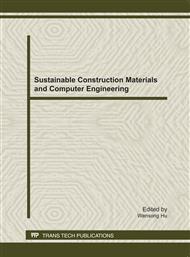p.34
p.40
p.47
p.52
p.58
p.63
p.69
p.75
p.83
Preliminary Study of the Unsteady Response Spectrum Based on Time-Varying
Abstract:
Engineering characteristics of ground motion can be defined by three factors that are respectively amplitude, frequency and duration. Any one of them in isolation are not fully made known for the ground notions affecting on the structure. Response spectrum theory is one of the principal methods in seismic analysis. The maximum response of structure under earthquake input is only varying with period in traditional response spectrum during the whole time duration. The relationship between the maximum response and duration can not be shown in the response spectrum of earthquake. The concept of unsteady response spectrum is based on moveable spectrum in this paper. Based on the conventional response spectrum, the factor of time is taken into account in unsteady response spectrum research. Then the response spectrum can be studied according to time varying. As examples for strong motion records obtained from WenChuan earthquake, two methods are proposed to research the effect of duration on response spectrum. The result of unsteady response spectrum can play an important role in the further study of the structural failure mechanism and cumulative damage under earthquake loadings.
Info:
Periodical:
Pages:
58-62
Citation:
Online since:
September 2011
Authors:
Price:
Сopyright:
© 2012 Trans Tech Publications Ltd. All Rights Reserved
Share:
Citation:


